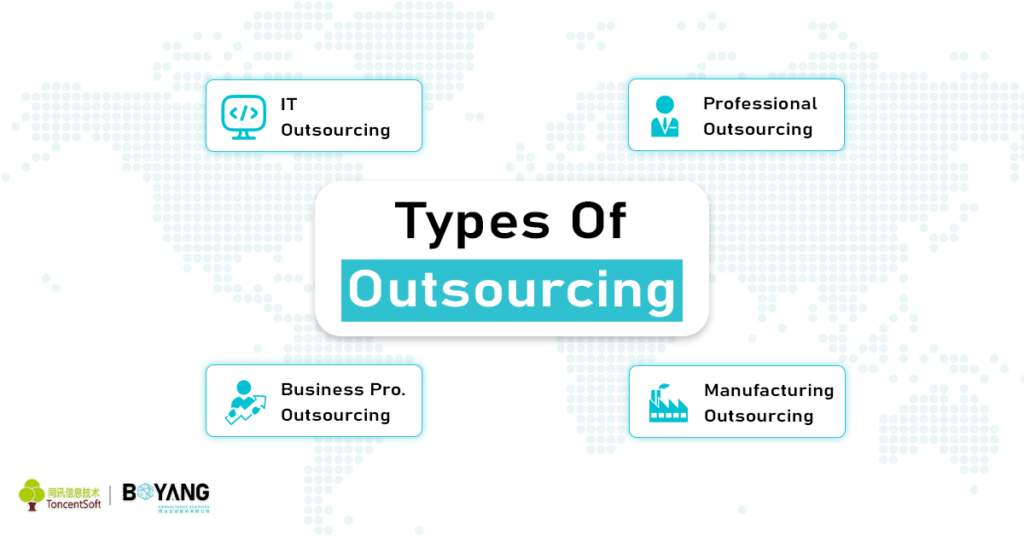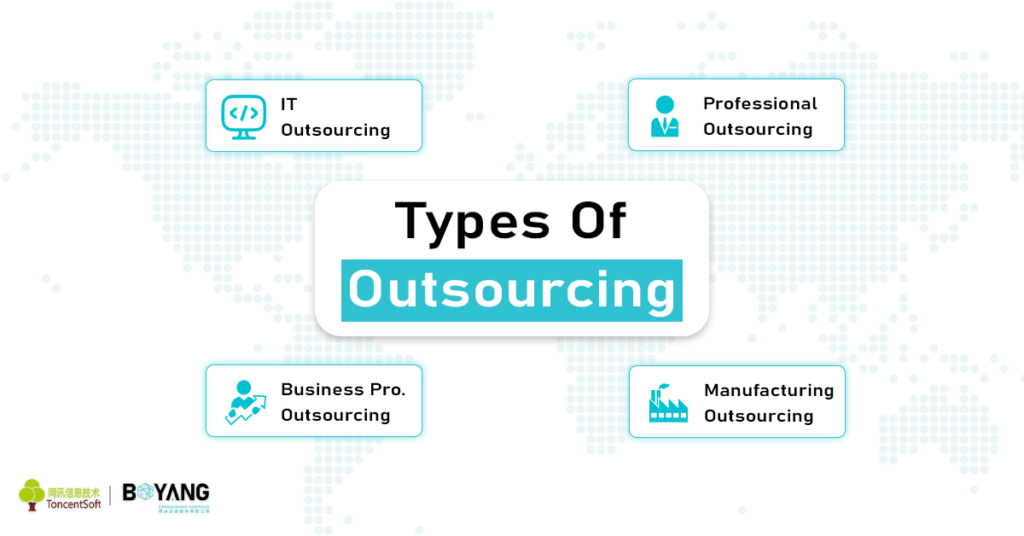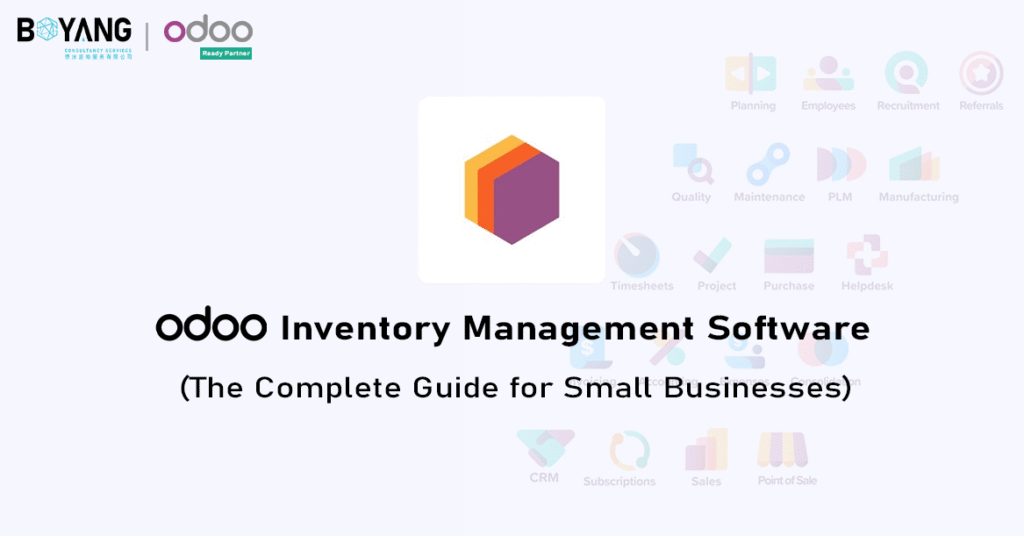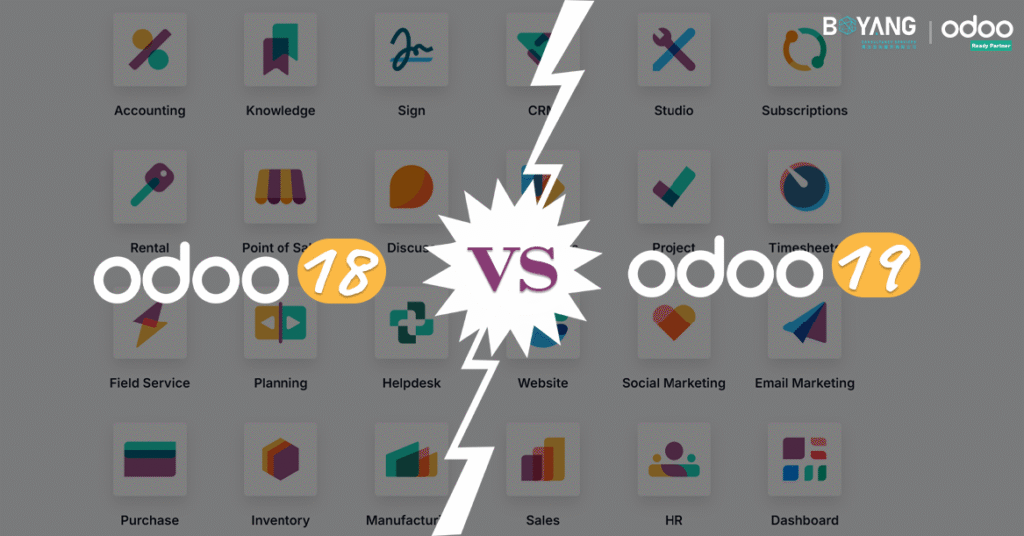Many companies listed in Hong Kong and Mainland China are under growing pressure to optimize operations, cut costs, and access specialized talent. On this spot, outsourcing has become a powerful tool to stay competitive, not just as a cost-saving strategy but as a long-term business booster. But outsourcing isn’t a one-size-fits-all model. Why? Because many of you are still not well aware of the types of outsourcing that deliver real results. While some businesses may only be familiar with 2 types of outsourcing, the reality is that there are more outsourcing types, each serving different operational and strategic needs such as nearshore, onshore, offshore and process-specific. In this article, we’ll explore the different types of outsourcing, their real-world examples, and how they solve common pain points faced by businesses.
What Is Outsourcing? Meaning and Examples
Outsourcing is a business practice where a company partners with an external organization to handle specific tasks, services, or operations that could otherwise be managed internally. To explain the term outsourcing, it’s important to understand the outsourcing meaning first.
The outsourcing meaning is essentially the delegation of certain business functions to a third-party provider under a contractual agreement. This is often done on an outsource basis, means the external partner assumes responsibility for the quality, timeliness, and performance of the task or service.
To give an outsourcing meaning and example: imagine a fintech company that needs to scale fast. Instead of hiring in-house developers, it may choose to outsource software developer to a specialized tech partner. This allows the company to access experienced experts, reduce costs, and speed up its time-to-market. The outsource basis meaning remains consistent it reflects an arrangement which means the external providers take ownership of specific deliverables while aligning with the client’s strategic goals.
Another key concept organizations often don’t know is the outsourced employee meaning. This refers to someone who works for an external service provider but contributes directly to your company’s day-to-day operations. They are not part of your in-house team or on your payroll, but they function as part of your extended workforce, often bringing specialized skills and flexibility.
Similarly, job outsourcing meaning refers to the practice of assigning specific roles to an external agency. This is common in nearby mainland cities like Guangzhou or Dongguan, where operational costs are lower, yet the talent pool is strong.
Lastly, both outsourcing jobs definition and outsourcing jobs definition center on the process of moving job functions outside the organization to improve efficiency, scalability, or access to expertise.
The 4 Main Types of Outsourcing
Understanding the four main types of outsourcing can help business leaders choose the right strategy based on their unique goals, budget, and growth stage.

1. Professional Outsourcing
This involves contracting out specialized people for services. Why is it popular? Because in high-cost cities like Hong Kong, where in-house specialists can be expensive, professional outsourcing is ideal for gaining expertise without long-term commitments. For example, a startup outsources its payroll rather than maintaining an in-house payroll department to stay compliant and lean.
2. IT Outsourcing
IT outsourcing refers to hiring external vendors to manage IT functions such as infrastructure management, helpdesk support, software development, cloud services, and cybersecurity. There are also types of IT outsourcing, which span:
- Nearshore Outsourcing: When you want to outsource or collaborate with nearby countries where you can reach clients within 1 or 2 hours (e.g., HK to Mainland China).
- Onshore Outsourcing: When you want to outsource within the same country, like HK to HK.
- Offshore Outsourcing: When a company is outsourcing engineering services from distant countries (e.g., Vietnam, Pakistan, or Eastern Europe).
One important topic that relies on this part is what is offshore outsourcing in BPO. This refers to business process outsourcing done overseas, like outsourcing customer support or data entry to a third-party company in a lower-cost country.
Many businesses also improve operational efficiency through IT workforce management in Hong Kong combined with strategic outsourcing to China-listed tech hubs. The models can be broken down further into project-based, hybrid, dedicated team, and staff augmentation.
3. Manufacturing Outsourcing
This involves contracting another company to produce goods or components. Outsourcing manufacturing is also known as contract manufacturing, where businesses outsource production to save time, money, and stay competitive.
Meanwhile, outsource production meaning is: instead of building a product in-house, companies outsource production to third-party manufacturers who have the tools, labor, and expertise to do it efficiently.
Why does it work? Because it is driven by volume efficiency, access to supply chains, and lower costs. This also reduces overhead for HK-listed companies. Let’s take manufacturing outsourcing examples like an electronics-driven company listed in Hong Kong outsourcing component assembly to a factory in Shenzhen.
Which Jobs Are Commonly Outsourced?
Several roles across industries are ideal for outsourcing, particularly for startups, SMEs, and enterprises seeking scalability.
Here, outsource job meaning is when a company decides to assign a specific job or task to an external expert instead of hiring someone in-house — that’s considered job outsourcing. Several job categories are frequently outsourced, including customer service, IT support, technical support, human resources, and finance/accounting. These roles are typically chosen for outsourcing due to their repetitive nature, scalability, or the need for niche expertise.
Another important concept is the outsourcing labor definition, in which outsourcing involves contracting a third party or individual to perform work that would otherwise be handled by full-time employees.
FAQs on Outsourcing
What is the meaning of an outsourced employee?
An outsourced employee is one who works under a company but performs tasks for client of that company. In this client don’t manage the HR related and legal obligations of that employee, this tackle by the company.
What are examples of outsourcing jobs?
Some practical outsourcing jobs examples includes when hiring third-party to manage your company specific projects such as for development.
What is offshore outsourcing in BPO?
Offshore outsourcing in BPO means delegating non-core business functions like specific operations managed by a third party which is located in another distant country, typically to save costs and access broader special and borader professional pools.
How does IT outsourcing work?
IT outsourcing works by forming a contract with a third-party vendor to handle your project needs. This includes infrastructure management, software development, support, cloud migration, or cybersecurity. These services are often provided by professionals that integrate with your existing processes.
Final Thoughts:
Outsourcing has become an essential tool for companies to remain agile and competitive. Whether you’re launching a startup, scaling a mid-size operation, or managing a large enterprise, embracing the outsourcing can help save costs, access specialized talent, improve efficiency, accelerate growth. The key lies in aligning the model with your business goals, internal capabilities, and growth strategy.
Interested in getting the most out of your outsourcing? Let Boyang help you build scalable, cost-efficient teams by leveraging 20+ years of expertise where it has served many clients. Contact us today to get started with Free consultation directly fro our specialists.
Did you find this article interesting? Support us on LinkedIn, Twitter, WeChat and Facebook to read more helpful content. Subscribe to our newsletter “BYCSHK Insider” for direct corporate, events insights and partnership insights.






